All Good Digs Must Come to an End (for the Summer)
On June 26, Elizabeth Minor ’03, lecturer in anthropology at Wellesley, and six students began the process of closing their archeological dig on Severance Hill for the summer. The team has spent the last few weeks carefully excavating two units on the hillside that was the site of College Hall, destroyed in a fire almost 105 years ago.
Minor and her team are no strangers of the courtyards and hills around Tower Court. Minor has led excavations in multiple sites in the area since this project began in the fall of 2017. This summer, the team focused on Tower Courtyard and the top of Severance Hill.
When developing the project, Minor used student input to determine where to dig. Students indicated where they thought the most interesting spots were on a digital map overlaid with a map of College Hall; Minor and her team dug in the locations that got the most clicks.
While working in the courtyard, the students uncovered a bullet that may have belonged to the Naval officers in training housed by Wellesley in the 1940s. They also uncovered a rubber belt and multiple square nails.
After completing their dig in Tower Courtyard, the team moved to the top of Severance Hill to continue their work. In one unit there, they found broken dining hall trays (likely used for sledding), a shirt button, a pork rib presumably from a picnic, and some tiny remains of teacups and saucers. When they expanded their search to a second unit, they also found fossils, scientific equipment, mineral samples, and a brick wall.
Two weeks later, Minor and her student researchers spent a warm morning on Severance Hill finishing their documentation and closing the site for the summer. Learn more about the Wellesley College Hall Archaeology Project.
With reporting from Maggie Olmsted ’21
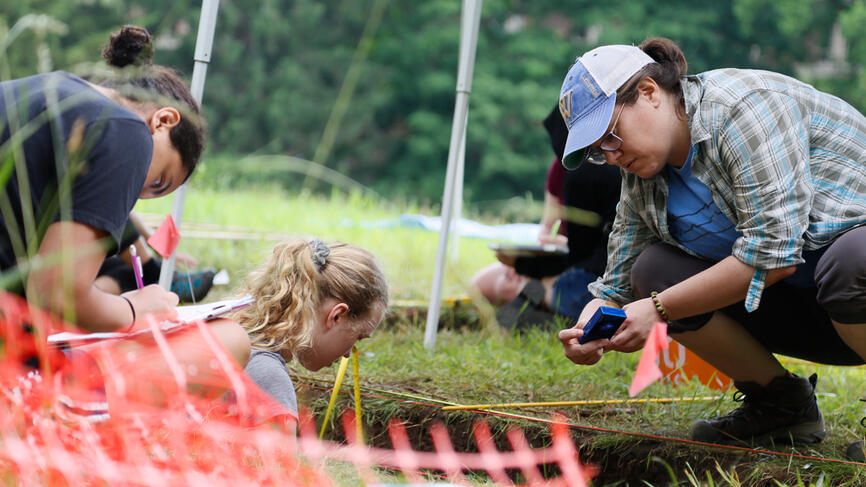
Before closing the site, Lulu Al-Saud ’21, Corinne Quinn ’21, and Minor (left to right) meticulously document the layout of each unit, making exact measurements and drawing to-scale diagrams.
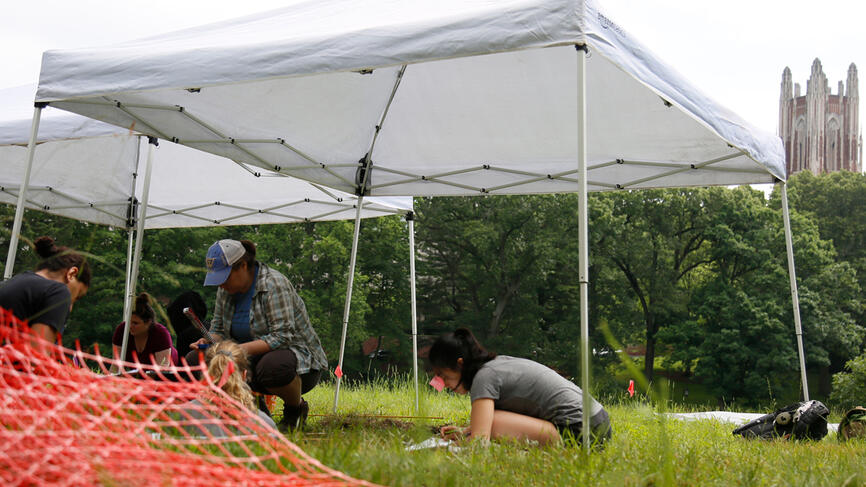
(Left to right) Al-Saud, Jacqueline Brinkhaus ’21, Capucine Zelenko (a summer student from Ringling College), Quinn, Minor, and Eliene Wen Wen ’21 studied their units carefully all morning before beginning the process of closing them up.
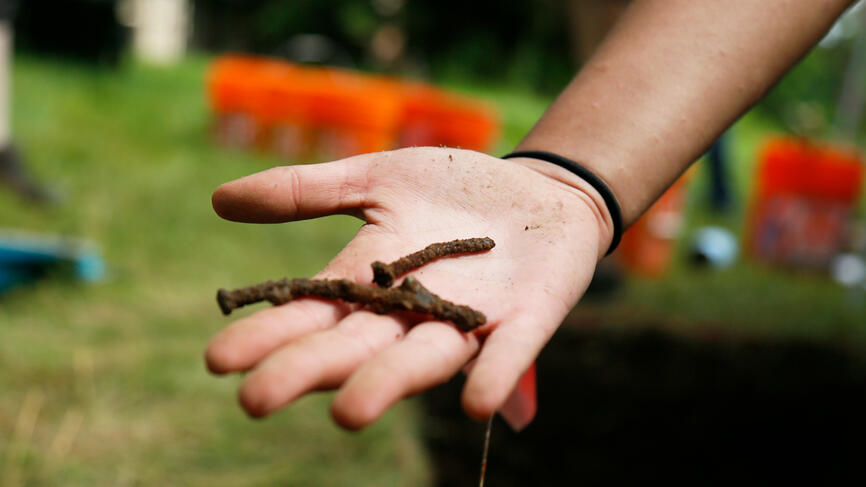
Al-Saud holds two nails that were among the interesting finds from the site. They date to before 1930 and were possibly involved in the original College Hall or the construction that followed its destruction.
Notably, the team’s discoveries include what may be the remains of College Hall’s natural history collection as well as a portion of a brick wall, which could have implications for future archaeological digs. “This is the first documented brick wall from College Hall,” Minor said, “and it helps start to precisely place the College Hall plan on the area.”
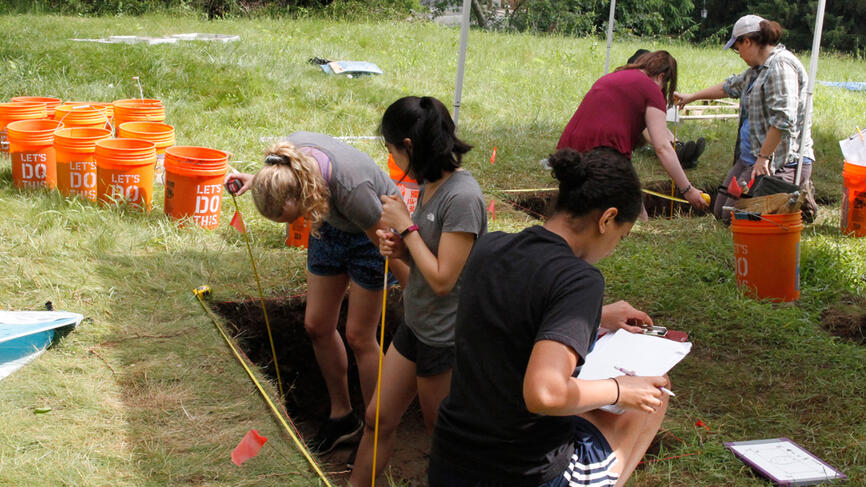
Many students and volunteers have been involved in the project. “I first got involved with the dig through volunteering in the fall last year,” says Wen Wen. “I saw an email about volunteering to help out in an archaeological dig and decided to try it out.” Quinn, Wen Wen, Al-Saud, and Brinkhaus (left to right) are just a few of the students who have worked with Minor (right) on her excavations since this project began in the fall of 2017. “I plan on volunteering again in the fall when they reopen the dig,” Wen Wen said.
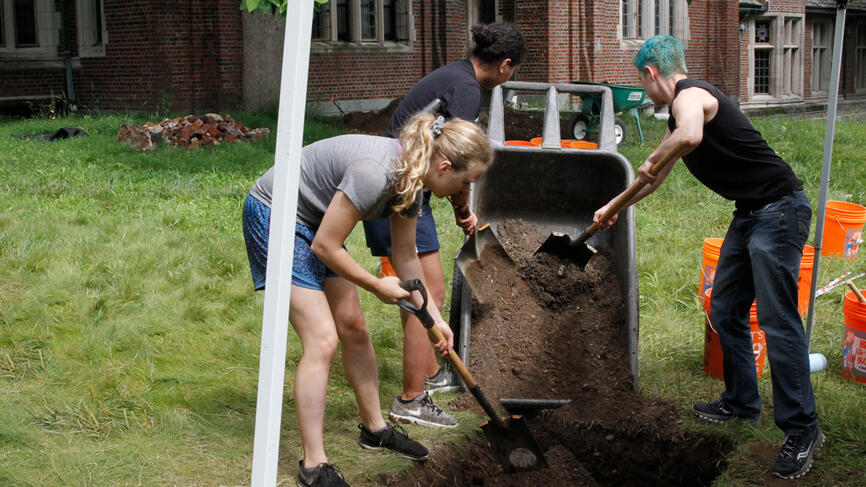
After recording the site, Quinn, Al-Salud, and volunteer Shane Cox (left to right) shovel dirt over one of the units. Before they got started, Minor placed pennies from the year 2019 so that if anyone else digs in the same spots, they will know the year and depth of the last dig.

Students will have more opportunities to explore the sites in the near future. “In the fall, my Anthro 103: Intro to Archaeology class will excavate and also record and study the finds from the summer and past seasons,” Minor said. “We excavate on some weekend days and perhaps one day during the week based on interest. Anyone can email me to volunteer, even just for a day!”



